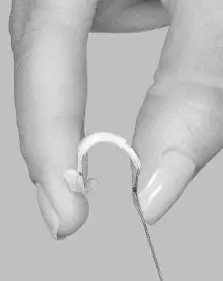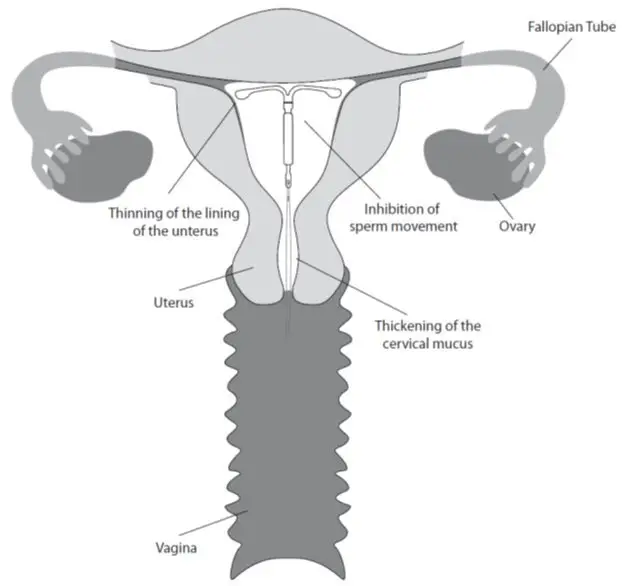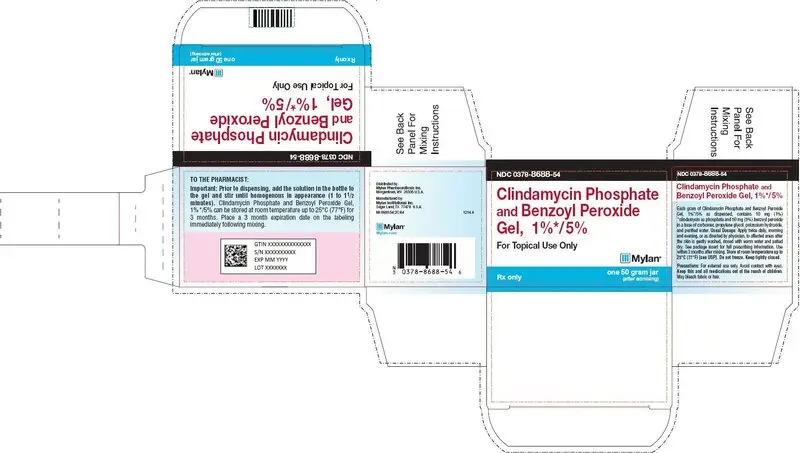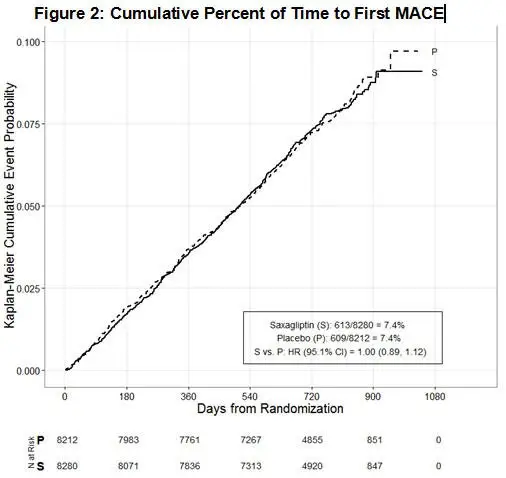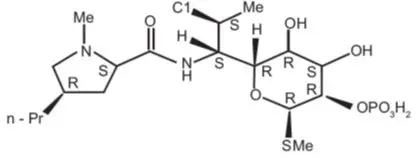Drug Detail:Acanya (Benzoyl peroxide and clindamycin topical [ ben-zoyl-per-ox-ide-and-clin-da-mye-sin ])
Drug Class: Topical acne agents
Highlights of Prescribing Information
ACANYA®
(clindamycin phosphate and benzoyl peroxide) gel, for topical use
Initial U.S. Approval: 2000
Indications and Usage for Acanya
ACANYA Gel is a combination of clindamycin phosphate (a lincosamide antibacterial) and benzoyl peroxide indicated for the topical treatment of acne vulgaris in patients 12 years or older. (1)
Acanya Dosage and Administration
- •
- Apply a pea-sized amount of ACANYA Gel to the face once daily. (2)
- •
- Not for oral, ophthalmic, or intravaginal use. (2)
Dosage Forms and Strengths
Gel, 1.2% clindamycin phosphate/2.5% benzoyl peroxide (3)
Contraindications
ACANYA Gel is contraindicated in:
- •
- Patients who have demonstrated hypersensitivity (e.g., anaphylaxis) to clindamycin, benzoyl peroxide, any components of the formulation, or lincomycin. (4.1)
- •
- Patients with a history of regional enteritis, ulcerative colitis, or antibiotic-associated colitis. (4.2)
Warnings and Precautions
- •
- Colitis: Orally and parenterally administered clindamycin has been associated with severe colitis, which may result in death. Diarrhea, bloody diarrhea, and colitis (including pseudomembranous colitis) have been reported with the use of topical and systemic clindamycin. ACANYA Gel should be discontinued if significant diarrhea occurs. (5.1)
- •
- Ultraviolet Light and Environmental Exposure: Minimize sun exposure following drug application. (5.2)
Adverse Reactions/Side Effects
The following selected adverse reactions occurred in less than 0.2% of patients: application site pain (0.1%); application site exfoliation (0.1%); and application site irritation (0.1%). (6.1)
To report SUSPECTED ADVERSE REACTIONS, contact Bausch Health US, LLC at 1-800-321-4576 or FDA at 1-800-FDA-1088 or www.fda.gov/medwatch.
Drug Interactions
- •
- Avoid using ACANYA Gel in combination with topical or oral erythromycin-containing products because of its clindamycin component. (7.1)
See 17 for PATIENT COUNSELING INFORMATION and FDA-approved patient labeling.
Revised: 9/2020
Related/similar drugs
doxycycline, clindamycin topical, erythromycin topical, tetracycline, TazoracFull Prescribing Information
1. Indications and Usage for Acanya
ACANYA® Gel is indicated for the topical treatment of acne vulgaris in patients 12 years or older.
2. Acanya Dosage and Administration
Before applying ACANYA Gel, wash your face gently with a mild soap, rinse with warm water, and pat your skin dry.
Apply a pea-sized amount of ACANYA Gel to the face once daily. Avoid the eyes, mouth, mucous membranes, or areas of broken skin.
Use of ACANYA Gel beyond 12 weeks has not been evaluated.
Concomitant topical acne therapy should be used with caution because a possible cumulative irritancy effect may occur, especially with the use of peeling, desquamating, or abrasive agents.
ACANYA Gel is not for oral, ophthalmic, or intravaginal use.
3. Dosage Forms and Strengths
Gel, 1.2%/2.5%
Each gram of ACANYA Gel contains 10 mg (1%) clindamycin as phosphate, and 25 mg (2.5%) benzoyl peroxide in a white to off-white, opaque, smooth gel.
4. Contraindications
4.1 Hypersensitivity
ACANYA Gel is contraindicated in those individuals who have shown hypersensitivity to clindamycin, benzoyl peroxide, any components of the formulation, or lincomycin. Anaphylaxis, as well as allergic reactions leading to hospitalization, has been reported in postmarketing use with ACANYA Gel [see Postmarketing Experience (6.2)].
5. Warnings and Precautions
5.1 Colitis
Systemic absorption of clindamycin has been demonstrated following topical use of clindamycin. Diarrhea, bloody diarrhea, and colitis (including pseudomembranous colitis) have been reported with the use of topical and systemic clindamycin. When significant diarrhea occurs, ACANYA Gel should be discontinued.
Severe colitis has occurred following oral and parenteral administration of clindamycin with an onset of up to several weeks following cessation of therapy. Antiperistaltic agents such as opiates and diphenoxylate with atropine may prolong and/or worsen severe colitis. Severe colitis may result in death.
Studies indicate toxin(s) produced by Clostridia is one primary cause of antibiotic-associated colitis. The colitis is usually characterized by severe persistent diarrhea and severe abdominal cramps and may be associated with the passage of blood and mucus. Stool cultures for Clostridium difficile and stool assay for C. difficile toxin may be helpful diagnostically.
5.2 Ultraviolet Light and Environmental Exposure
Minimize sun exposure including use of tanning beds or sun lamps following drug application.
5.3 Concomitant Topical Medications
Concomitant topical acne therapy should be used with caution since a possible cumulative irritancy effect may occur, especially with the use of peeling, desquamating, or abrasive agents. If irritancy or dermatitis occurs, reduce frequency of application or temporarily interrupt treatment and resume once the irritation subsides. Treatment should be discontinued if the irritation persists.
6. Adverse Reactions/Side Effects
6.1 Clinical Trials Experience
Because clinical trials are conducted under widely varying conditions, adverse reactions observed in the clinical trials of a drug cannot always be directly compared to rates in the clinical trials of another drug and may not reflect the rates observed in practice.
The following selected adverse reactions occurred in less than 0.2% of subjects treated with ACANYA Gel: application site pain (0.1%); application site exfoliation (0.1%); and application site irritation (0.1%).
During clinical trials, subjects were assessed for local cutaneous signs and symptoms of erythema, scaling, itching, burning and stinging. Most local skin reactions increased and peaked around Week 4 and continually decreased over time reaching near baseline levels by Week 12. The percentage of subjects that had symptoms present before treatment, the maximum value recorded during treatment, and the percent with symptoms present at Week 12 are shown in Table 1.
| Before Treatment
(Baseline) | Maximum During
Treatment | End of Treatment
(Week 12) |
|||||||
|---|---|---|---|---|---|---|---|---|---|
| Mild | Mod.* | Severe | Mild | Mod.* | Severe | Mild | Mod.* | Severe | |
|
|
|
|
|
|
|
|
|
|
|
|
|
|
|
|
|
|
|
|
|
|
|
|
|
|
|
|
|
|
|
|
|
|
|
|
|
|
|
|
|
|
|
|
|
|
|
|
|
|
6.2 Postmarketing Experience
Because these reactions are reported voluntarily from a population of uncertain size, it is not always possible to reliably estimate their frequency or establish a causal relationship to drug exposure.
Anaphylaxis, as well as allergic reactions leading to hospitalizations, has been reported in postmarketing use of products containing clindamycin/benzoyl peroxide.
7. Drug Interactions
8. Use In Specific Populations
8.1 Pregnancy
Risk Summary
There are no available data on ACANYA Gel use in pregnant women to evaluate a drug-associated risk of major birth defects, miscarriage, or adverse maternal or fetal outcomes. The limited published data on use of clindamycin in pregnant women with exposure during the first trimester are insufficient to inform a drug-associated risk of pregnancy-related adverse outcomes (see Data).In limited published clinical trials with pregnant women, the systemic administration of clindamycin during the second and third trimesters has not been associated with an increased frequency of major birth defects.
In animal reproduction studies, clindamycin did not cause malformations or embryo-fetal development toxicity in pregnant rats and mice when administered during the period of organogenesis at systemic doses up to 240 times the maximum recommended human dose (MRHD) of 2.5 g ACANYA Gel, based on body surface area (BSA) comparisons (see Data).
The estimated background risk of major birth defects and miscarriage for the indicated population is unknown. All pregnancies have a background risk of major birth defects, loss, and other adverse outcomes. In the U.S. general population, the estimated background risk of major birth defects and miscarriage in clinically recognized pregnancies is 2-4% and 15-20%, respectively.
Data
Human Data
In limited published trials in pregnant women administered clindamycin during the first trimester of pregnancy, there was no difference in the rate of major birth defects reported among in utero exposed infants compared to unexposed infants. These data cannot definitely establish or exclude any clindamycin-associated risk during pregnancy.
Animal Data
Animal reproductive/developmental toxicity studies have not been conducted with ACANYA Gel or benzoyl peroxide. Developmental toxicity studies of clindamycin performed in pregnant rats and mice administered during the period of organogenesis at oral doses of up to 600 mg/kg/day (240 and 120 times the MRHD for, respectively, based on BSA comparisons) or subcutaneous doses of up to 200 mg/kg/day (80 and 40 times the MRHD for clindamycin, respectively, based on BSA comparisons) revealed no malformations or embryo-fetal development toxicity.
8.2 Lactation
Risk Summary
There are no data on the presence of clindamycin or benzoyl peroxide in human milk, the effects on the breastfed child, or the effects on milk production following topical administration. However, clindamycin has been reported to be present in breast milk in small amounts following oral and parenteral administration. The developmental and health benefits of breastfeeding should be considered along with the mother’s clinical need for ACANYA Gel and any potential adverse effects on the breastfed child from ACANYA Gel or from the underlying maternal condition.
Clinical Considerations
If used during lactation and ACANYA Gel is applied to the chest, care should be taken to avoid accidental ingestion by the infant.
11. Acanya Description
ACANYA (clindamycin phosphate and benzoyl peroxide) Gel, 1.2%/2.5% is a combination product with two active ingredients in a white to off-white, opaque, smooth, aqueous gel formulation intended for topical use. Clindamycin phosphate is a water-soluble ester of the semisynthetic antibiotic produced by a 7(S)-chloro-substitution of the 7(R)‑hydroxyl group of the parent antibiotic lincomycin.
The chemical name for clindamycin phosphate is Methyl 7-chloro-6,7,8-trideoxy-6-(1-methyl-trans-4-propyl-L-2-pyrrolidinecarboxamido)-1-thio-L-threo-α-D-galacto-octopyranoside 2-(dihydrogen phosphate). The structural formula for clindamycin phosphate is represented below:
Clindamycin phosphate:
- Molecular Formula: C18H34ClN2O8PS Molecular Weight: 504.97
Benzoyl peroxide is an antibacterial and keratolytic agent. The structural formula for benzoyl peroxide is represented below:
Benzoyl peroxide:
- Molecular Formula: C14H10O4 Molecular Weight: 242.23
ACANYA Gel contains the following inactive ingredients: carbomer 980, potassium hydroxide, propylene glycol, and purified water. Each gram of ACANYA Gel contains 1.2% of clindamycin phosphate which is equivalent to 1% clindamycin.
12. Acanya - Clinical Pharmacology
12.1 Mechanisms of Action
Clindamycin: Clindamycin is a lincosamide antibacterial [see Microbiology (12.4)].
Benzoyl Peroxide: Benzoyl peroxide is an oxidizing agent with bactericidal and keratolytic effects but the precise mechanism of action is unknown.
12.3 Pharmacokinetics
The systemic absorption of clindamycin was investigated in an open-label, multiple-dose trial in 16 adult subjects with moderate to severe acne vulgaris treated with 1 gram of ACANYA Gel applied to the face once daily for 30 days. Twelve subjects (75%) had at least one quantifiable clindamycin plasma concentration above the lower limit of quantification (LOQ = 0.5 ng/mL) on Day 1 or Day 30. On Day 1, the mean (± standard deviation) peak plasma concentration (Cmax) was 0.78 ± 0.22 ng/mL (n=9 with measurable concentrations), and the mean AUC0-t was 5.29 ± 0.81 h.ng/mL (n=4). On Day 30, the mean Cmax was 1.22 ± 0.88 ng/mL (n=10), and the mean AUC0-t was 8.42 ± 6.01 h.ng/mL (n=6). Clindamycin plasma concentrations were below LOQ in all subjects at 24 hours post-dose on the three tested days (Day 1, 15, and 30).
Benzoyl peroxide has been shown to be absorbed by the skin where it is converted to benzoic acid.
12.4 Microbiology
Clindamycin binds to the 50S ribosomal subunits of susceptible bacteria and prevents elongation of peptide chains by interfering with peptidyl transfer, thereby suppressing bacterial protein synthesis.
Clindamycin and benzoyl peroxide individually have been shown to havein vitro activity against Propionibacterium acnes, an organism which has been associated with acne vulgaris; however, the clinical significance of this activity against P. acnes is not known.
P. acnes resistance to clindamycin has been documented. Resistance to clindamycin is often associated with resistance to erythromycin.
13. Nonclinical Toxicology
13.1 Carcinogenesis, Mutagenesis, Impairment of Fertility
Carcinogenicity, mutagenicity, and impairment of fertility testing of ACANYA Gel have not been performed.
Benzoyl peroxide has been shown to be a tumor promoter and progression agent in a number of animal studies. Benzoyl peroxide in acetone at doses of 5 and 10 mg administered topically twice per week for 20 weeks induced skin tumors in transgenic Tg.AC mice. The clinical significance of this is unknown.
Carcinogenicity studies have been conducted with a gel formulation containing 1% clindamycin and 5% benzoyl peroxide. In a 2-year dermal carcinogenicity study in mice, treatment with the gel formulation at doses of 900, 2700, and 15000 mg/kg/day (1.8, 5.4, and 30 times the MRHD for clindamycin and 3.6, 10.8, and 60 times the MRHD for benzoyl peroxide, respectively, based on BSA comparisons) did not cause any increase in tumors. However, topical treatment with a different gel formulation containing 1% clindamycin and 5% benzoyl peroxide at doses of 100, 500, and 2000 mg/kg/day caused a dose-dependent increase in the incidence of keratoacanthoma at the treated skin site of male rats in a 2-year dermal carcinogenicity study in rats. In an oral (gavage) carcinogenicity study in rats, treatment with the gel formulation at doses of 300, 900, and 3000 mg/kg/day (1.2, 3.6, and 12 times the MRHD for clindamycin and 2.4, 7.2, and 24 times the MRHD for benzoyl peroxide, respectively, based on BSA comparisons) for up to 97 weeks did not cause any increase in tumors.
Clindamycin phosphate was not genotoxic in the human lymphocyte chromosome aberration assay. Benzoyl peroxide has been found to cause DNA strand breaks in a variety of mammalian cell types, to be mutagenic in S. typhimurium tests by some but not all investigators, and to cause sister chromatid exchanges in Chinese hamster ovary cells.
Fertility studies have not been performed with ACANYA Gel or benzoyl peroxide, but fertility and mating ability have been studied with clindamycin. Fertility studies in rats treated orally with up to 300 mg/kg/day of clindamycin (approximately 120 times the MRHD for clindamycin, based on BSA comparisons) revealed no effects on fertility or mating ability.
14. Clinical Studies
The safety and efficacy of once daily use of ACANYA Gel were assessed in two 12-week multi-center, randomized, blinded trials in subjects 12 years and older with moderate to severe acne vulgaris. The two trials were identical in design and compared ACANYA Gel to clindamycin in the vehicle gel, benzoyl peroxide in the vehicle gel, and the vehicle gel alone.
The co-primary efficacy variables were:
- 1.
- Mean absolute change from baseline at Week 12 in:
- 2.
- Inflammatory lesion counts
- 3.
- Non-inflammatory lesion counts
- 4.
- Percent of subjects who had a 2-grade improvement from baseline on an Evaluator’s Global Severity (EGS) score.
The EGS scoring scale used in all of the clinical trials for ACANYA Gel is as follows:
| Grade | Description |
|---|---|
|
|
|
|
|
|
|
|
|
|
|
|
The results of Trial 1 at Week 12 are presented in Table 2:
| ACANYA Gel | Clindamycin
Gel | Benzoyl
Peroxide Gel | Vehicle Gel | |
|---|---|---|---|---|
| Trial 1 | N = 399 | N = 408 | N = 406 | N = 201 |
|
|
|
|
|
|
|
|
|
|
| ||||
|
|
|
|
|
|
|
|
|
|
| ||||
|
|
|
|
|
|
|
|
|
|
The results of Trial 2 at Week 12 are presented in Table 3:
| ACANYA Gel | Clindamycin
Gel | Benzoyl
Peroxide Gel | Vehicle Gel | |
|---|---|---|---|---|
| Trial 2 | N = 398 | N = 404 | N = 403 | N = 194 |
|
|
|
|
|
|
|
|
|
|
| ||||
|
|
|
|
|
|
|
|
|
|
| ||||
|
|
|
|
|
|
|
|
|
|
16. How is Acanya supplied
16.1 How Supplied
ACANYA Gel, 1.2%/2.5%, a white to off-white smooth gel is supplied as:
NDC 13548-132-50 50 g pump
17. Patient Counseling Information
Advise the patient to read the FDA-approved patient labeling (Patient Information).
- •
- Patients who develop allergic reactions such as severe swelling or shortness of breath should discontinue use and contact their physician immediately.
- •
- ACANYA Gel may cause irritation such as erythema, scaling, itching, or burning, especially when used in combination with other topical acne therapies.
- •
- Excessive or prolonged exposure to sunlight should be limited. To minimize exposure to sunlight, a hat or other clothing should be worn. Sunscreen may also be used.
- •
- ACANYA Gel may bleach hair or colored fabric.
Distributed by:
Bausch Health US, LLC
Bridgewater, NJ 08807 USA
Manufactured by:
Bausch Health Companies Inc.
Laval, Quebec H7L 4A8, Canada
U.S. Patent Numbers: 8,288,434; 8,663,699; 8,895,070; 9,078,870; 10,220,049 and 10,624,918
ACANYA is a trademark of Bausch Health Companies Inc. or its affiliates.
© 2020 Bausch Health Companies Inc. or its affiliates
9387203
Patient Package Insert
|
|
|
Important information: ACANYA Gel is for use on skin only (topical use). Do not use ACANYA Gel in your mouth, eyes, or vagina. |
|
|
Tell your doctor about all the medicines you take, including prescription and over-the-counter medicines, vitamins and herbal supplements. ACANYA Gel may affect the way other medicines work and other medicines may affect how ACANYA Gel works.
Know the medicines you take. Keep a list of them and show it to your doctor and pharmacist when you get a new medicine. |
|
|
What should I avoid while using ACANYA Gel?
|
|
What are possible side effects of ACANYA Gel? ACANYA Gel can cause serious side effects including:
The most common side effects of ACANYA Gel include application site pain, application site irritation including redness, itching, burning, and stinging. Stop using ACANYA Gel and call your doctor if you have a skin rash or your skin becomes very red, itchy or swollen. Talk to your doctor about any side effect that bothers you or that does not go away.
Call your doctor for medical advice about side effects. You may report side effects to FDA at 1-800-FDA-1088. |
|
How should I store ACANYA Gel?
Keep ACANYA Gel and all medicines out of the reach of children. |
|
General information about the safe and effective use of ACANYA Gel.
|
|
What are the ingredients in ACANYA Gel? Active Ingredients: clindamycin phosphate and benzoyl peroxide Inactive Ingredients: carbomer 980, potassium hydroxide, propylene glycol, and purified water Distributed by: Bausch Health US, LLC, Bridgewater, NJ 08807 USA Manufactured by: Bausch Health Companies Inc., Laval, Quebec H7L 4A8, Canada U.S. Patent Numbers: 8,288,434; 8,663,699; 8,895,070; 9,078,870; 10,220,049 and 10,624,918 ACANYA is a trademark of Bausch Health Companies Inc. or its affiliates. © 2020 Bausch Health Companies Inc. or its affiliates For more information about ACANYA Gel, call 1-800-321-4576. |
This Patient Information has been approved by the U.S. Food and Drug Administration.
Revised: 09/2020
- 9387203
Instructions for Use
INSTRUCTIONS FOR USE
ACANYA®(AH-CAN΄-YAH)
(clindamycin phosphate and benzoyl peroxide) gel, 1.2%/2.5%
Important Information: ACANYA Gel is for use on skin only (topical use). ACANYA Gel is not for use in your mouth, eyes or vagina.
Read this Instructions for Use before you start using ACANYA Gel and each time you get a refill. There may be new information. This information does not take the place of talking with your doctor about your medical condition or treatment.
- •
- Apply ACANYA Gel to your face 1 time each day as prescribed.
- •
- Before you apply ACANYA Gel, wash your face gently with a mild soap, rinse with warm water, and pat your skin dry.
- •
- To apply ACANYA Gel to your face, use the pump to dispense one pea-sized amount of ACANYA Gel onto your fingertip. See Figure 1.
- •
- One pea-sized amount of ACANYA Gel should be enough to cover your entire face.
- Figure 1
- •
- Dot the one pea-sized amount of ACANYA Gel onto six areas of your face (chin, left cheek, right cheek, nose, left forehead, right forehead). See Figure 2.
Figure 2
- •
- Spread the gel over your face and gently rub it in. It is important to spread the gel over your entire face. If your doctor tells you to put ACANYA Gel on other areas of your skin with acne, be sure to ask how much you should use.
- •
- Wash your hands with soap and water after applying ACANYA Gel.
How should I store ACANYA Gel?
- •
- Store ACANYA Gel at room temperature at or below 77°F (25°C).
- •
- Do not freeze ACANYA Gel.
- •
- Throw away (discard) ACANYA Gel that has passed the expiration date.
- •
- Store pump upright.
- •
- Keep the container tightly closed.
Keep ACANYA Gel and all medicines out of the reach of children.
Distributed by: Bausch Health US, LLC, Bridgewater, NJ 08807 USA
Manufactured by: Bausch Health Companies Inc., Laval, Quebec H7L 4A8, Canada
U.S. Patent Numbers: 8,288,434; 8,663,699; 8,895,070; 9,078,870; 10,220,049 and 10,624,918
ACANYA is a trademark of Bausch Health Companies Inc. or its affiliates.
© 2020 Bausch Health Companies Inc. or its affiliates
The Patient Information and Instructions for Use have been approved by the U.S. Food and Drug Administration.
Issued: 09/2020
9387203
| ACANYA
clindamycin phosphate and benzoyl peroxide gel |
||||||||||||||||||||
|
||||||||||||||||||||
|
||||||||||||||||||||
|
||||||||||||||||||||
|
||||||||||||||||||||
|
||||||||||||||||||||
| Labeler - Bausch Health US, LLC (831922468) |
| Establishment | |||
| Name | Address | ID/FEI | Business Operations |
|---|---|---|---|
| Contract Pharmaceuticals Limited Canada | 248761249 | MANUFACTURE(13548-132) , PACK(13548-132) | |
| Establishment | |||
| Name | Address | ID/FEI | Business Operations |
|---|---|---|---|
| Bausch Health Companies, Inc. | 245141858 | MANUFACTURE(13548-132) , PACK(13548-132) | |




